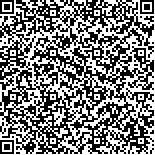下载中心
优秀审稿专家
优秀论文
相关链接
摘要

高分辨率遥感影像上细节信息繁杂、干扰物普遍存在,对其进行自动化道路识别与提取的相关研究仍处在探索阶段。在道路提取过程中引入矢量数据辅助,可解决初始信息获取的困难,得到可靠性较强的训练样本。为此,提出一种矢量数据辅助下的道路提取方法,能够筛选出矢量数据中包含的有效信息,引导实现对高分辨率遥感影像的道路自动提取。利用Mean-shift滤波对图像进行预处理后,首先从矢量数据获取候选种子点,并通过提炼同质区域的形状特征剔除错误候选点;然后,自动获取负样本点以进行朴素贝叶斯分类,并采用邻域质心投票算法从分类影像提取道路中心线;最后,结合像素跟踪与方向判断矢量化道路中心线,并提出一种基于矢量几何分析的断线连接与毛刺剔除方法,对提取结果进行信息修复与规整、优化。实验结果显示,该算法的提取质量达到80%以上,且具备较强的稳健性,能够适应具有不同道路辐射和分布特征的高分辨率遥感影像。
Considering the existence of both detailed information and interfering objects, research on recognition and extraction of roads from high-resolution remote sensing images remains in the exploration phase. The assistance of vector data during road extraction solves the difficulty of obtaining initial information. Thus, reliable training data can be selected. Therefore, a road extraction method that is supported by vector data is proposed, which effectively provides information that is included in the vector data and extract roads automatically from high-resolution remote sensing images. After the use of the mean shift filter to preprocess images, candidate seed points are acquired from vector data, among which false candidate points are later excluded via shape features of homogeneous areas. Then, negative sample points are selected for the conduct of Bayesian classification. After which, Neighborhood Centroid Voting is adopted to extract road centerlines from classified images. Finally, road centerlines are transformed into vector data by using a method that combines pixel tracking and direction estimation, and a segment linking and burr removing method is proposed based on geometric analysis of vectors. Experiments are conducted on a collection of high-resolution images in which roads have diverse types and distribution features. For an ideal case with clear and continuous roads, the extraction quality is up to 97.35%. For images with occlusions and interferences, the extraction quality stays above 80%, thereby indicating the effectiveness and robustness of the proposed method. A road extraction method that is supported by vector data has been proposed in this study. This method uses the information concluded based on vector data to guide the road extraction process, thus free of manual operation. Experimental results suggest that this method can automatically extract roads from high-resolution remote sensing images with accuracy and robustness, thereby being able to adapt to roads with diverse radiation and distribution features.

